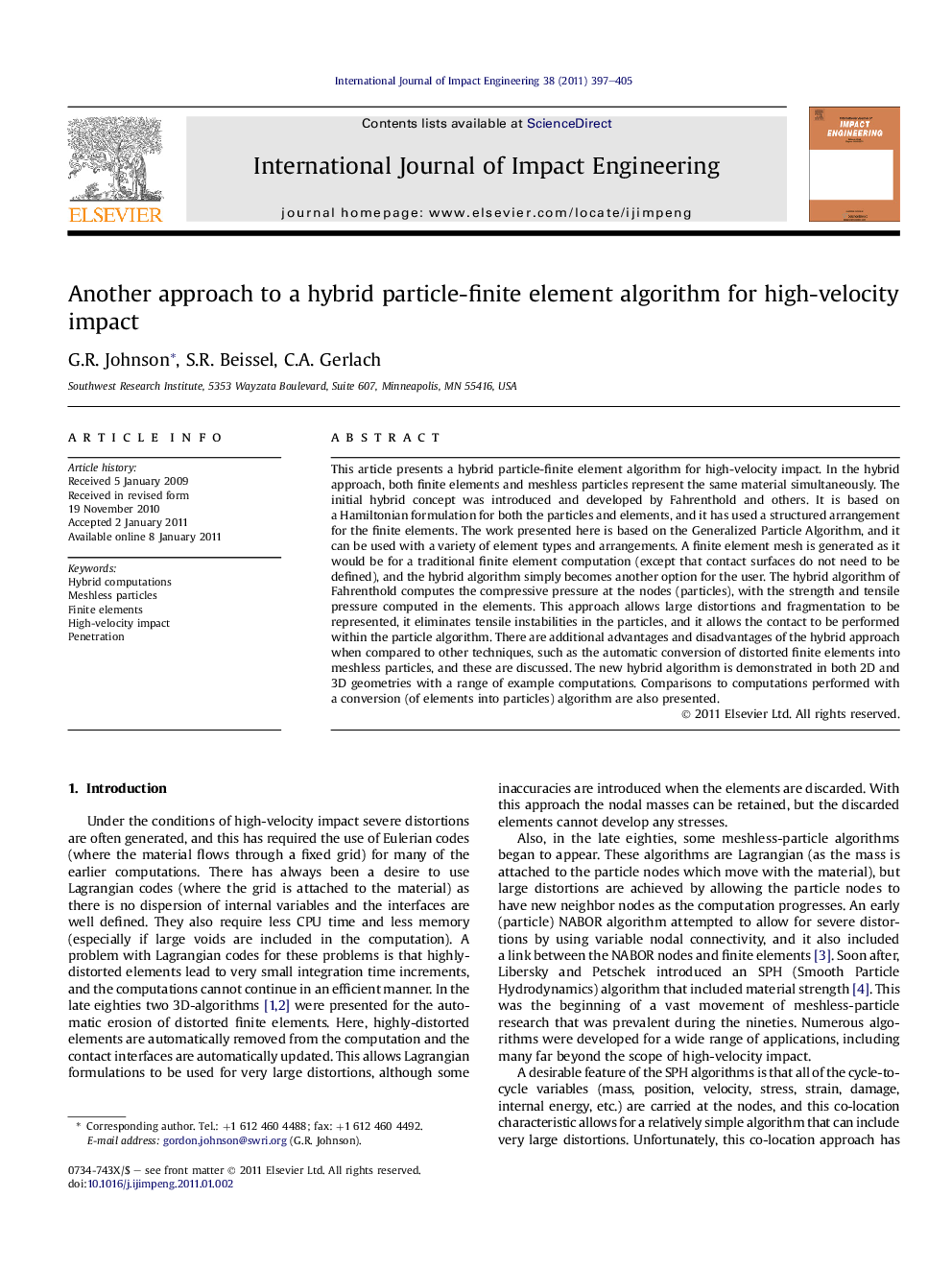| کد مقاله | کد نشریه | سال انتشار | مقاله انگلیسی | نسخه تمام متن |
|---|---|---|---|---|
| 778692 | 1464118 | 2011 | 9 صفحه PDF | دانلود رایگان |

This article presents a hybrid particle-finite element algorithm for high-velocity impact. In the hybrid approach, both finite elements and meshless particles represent the same material simultaneously. The initial hybrid concept was introduced and developed by Fahrenthold and others. It is based on a Hamiltonian formulation for both the particles and elements, and it has used a structured arrangement for the finite elements. The work presented here is based on the Generalized Particle Algorithm, and it can be used with a variety of element types and arrangements. A finite element mesh is generated as it would be for a traditional finite element computation (except that contact surfaces do not need to be defined), and the hybrid algorithm simply becomes another option for the user. The hybrid algorithm of Fahrenthold computes the compressive pressure at the nodes (particles), with the strength and tensile pressure computed in the elements. This approach allows large distortions and fragmentation to be represented, it eliminates tensile instabilities in the particles, and it allows the contact to be performed within the particle algorithm. There are additional advantages and disadvantages of the hybrid approach when compared to other techniques, such as the automatic conversion of distorted finite elements into meshless particles, and these are discussed. The new hybrid algorithm is demonstrated in both 2D and 3D geometries with a range of example computations. Comparisons to computations performed with a conversion (of elements into particles) algorithm are also presented.
Journal: International Journal of Impact Engineering - Volume 38, Issue 5, May 2011, Pages 397–405